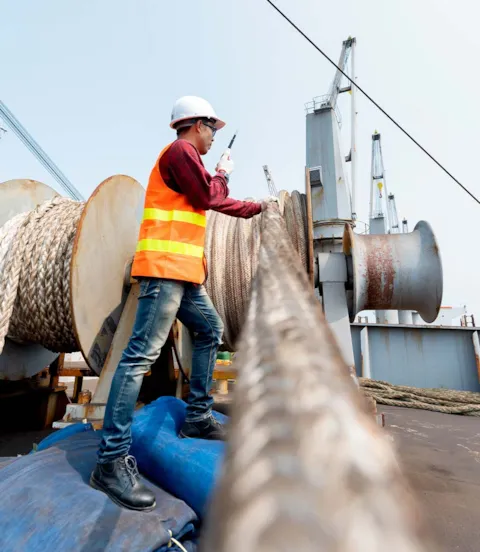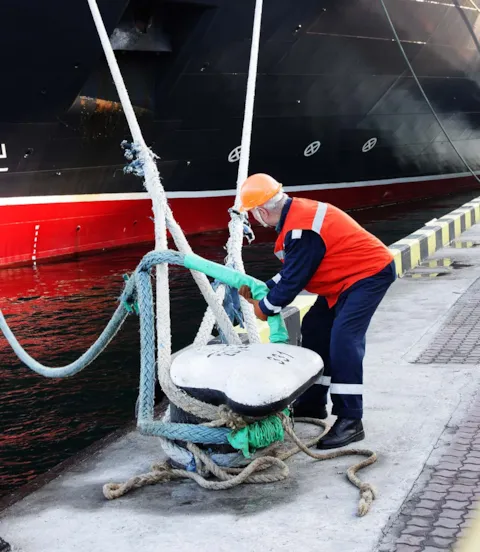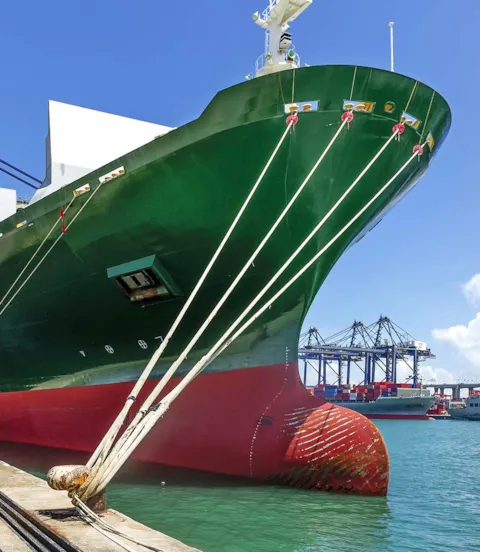Safe mooring: Navigating new IMO regulations with DNV
Mooring is one of the most common daily tasks facing seafarers. However, in recent years, incidents related to mooring have become more frequent, often resulting in injuries. New IMO regulations aim to make mooring safer but place new demands on shipowners.
The high frequency of mooring operations and a high level of human involvement have resulted in multiple safety incidents related to mooring over recent years.
The International Group of P&I Clubs reported 858 injuries and 31 fatalities involving mooring operations during the five-year period before 2021. This has been a key driver behind new SOLAS requirements related to mooring from the IMO.
New SOLAS requirements for safe mooring
With widespread recognition that the safety of mooring operations needs to be improved, amendments by the IMO to SOLAS regulation II-1/3-8 and new guidelines for safe mooring entered into force on 1 January 2024.
“In a nutshell, these new requirements for enhanced safety of mooring operations aim to enhance the strength and design of mooring arrangements, the selection of mooring equipment, including lines, and the maintenance and inspection of mooring equipment and lines,” says Bartosz Maciolowski, Principal Engineer, Technical Support Hull and Materials at DNV.
New mooring requirements affect maintenance practices on existing fleet
Two new guidelines are now in place for safe mooring. MSC.1/Circ.1619 relates to the design of mooring arrangements and the selection of mooring equipment and fittings for safe mooring, whilst MSC.1/Circ.1620 is a guideline related to the inspection and maintenance of mooring equipment, including lines. The Maritime Safety Committee has also published a revision of MSC.1/Circ.1175, which relates to guidance on shipboard towing and mooring equipment.
These guidelines will affect all vessels built after 1 January 2024 and compliance will mainly be handled by DNV’s classification operations during the approval process. However, MSC.1/Circ.1620 also affects vessels in operation. Whilst compliance with this can also be handled during the approval process for newbuilds, it will also retroactively affect the existing fleet in operation.
“Ship operators need to review their existing safety management systems related to mooring lines and mooring equipment on board and check compliance with MSC.1/Circ.1620. This will subsequently be confirmed by DNV class surveys during the first annual surveys in 2024,” says Maciolowski.
Regulations make line breaks more predictable
One of the key features of MSC.1/Circ.1620 is a requirement for all shipowners to establish Ship Design Minimum Breaking Load (MBLSD) for each of their vessels. In practice, this is a more accurate way of predicting when a mooring line breaks and will lead to greater safety.
“With the old system, called minimum breaking load (MBL), we knew the minimum point at which a line could break. However, this was unpredictable, because the line could break at any point over the MBL,” says Yiyang Li, Senior Consultant, Safe Mooring Team Lead at DNV Maritime Advisory. “Under the new system, we can say with much more certainty when a line will break.”

New mooring ropes should break within a more certain load range
Crucially, the lines certified to meet MBLSD requirements will no longer be certified with MBL terminology. This is being replaced by a new concept called Line Design Break Force (LDBF). In effect, this means that new mooring lines should be designed to break at a more certain load level, not lower than the MBLSD, and within an intended deviation range of 5%.
“There is huge energy stored in a synthetic rope and when it snaps back after breaking it can cause serious injury or death,” says Yiyang. “Because this new system ensures that the line should break under a certain level of force, crew members and onshore workers can plan for this eventuality with more certainty.”

DNV assists clients with mooring regulatory compliance
DNV Maritime Advisory, which operates completely independently from DNV’s Class services, offers two key services to clients wishing to improve the safety of their mooring operations. Most relevant to the new SOLAS requirements, Maritime Advisory carries out a review of clients’ mooring system designs, helping to establish the MBLSD and identify mooring-related risks in the original ship design. The service also goes beyond compliance by providing a comprehensive analysis of companies’ mooring operations, focusing on maintenance and inspection procedures and plans. This helps clients to optimize the safety and functionality of their mooring in an efficient and straightforward way.
“Specific to the new SOLAS requirements, we first help our clients to review all of their design-related documents and design standards related to all aspects of a vessel’s mooring system design,” says Yiyang. “We can then use this information to help establish the vessel’s appropriate MBLSD. This then functions as a baseline criterion to measure and verify all the other components related to mooring.”

MBLSD crucial in assessing all mooring-related components
Establishing these criteria helps DNV's Advisory experts to assist clients in developing safer procedures around other mooring-related parts on vessels. For example, the MBLSD can be used as a guidance for advising clients on how to best adjust the rendering point of winches so that the tension in the ropes is controlled at an acceptable level to reduce the risk of breaking strength under normal operation.
“You can set a winch render that is slightly higher than the expected working loading range but well lower than the design break force of the line (LDBF),” says Yiyang. “This means that before the line reaches its maximum loading and break strength, the winch will reel out, reducing the tension of that line and distributing the excessive load to adjacent lines.”

Design-related risk management helps to manage mooring risks
DNV Maritime Advisory can also carry out a detailed review of a vessel’s design so that mooring-related risks can be identified and mitigated against. This design-related risk management assesses every component of a vessel’s mooring system, ensuring that each ship’s limitations are effectively managed.
As Yiyang points out, identifying design-related risks that a ship was originally built with creates awareness among a ship’s crew and mooring parties. This helps to manage risks and take the first steps in setting up necessary operational mitigations. “It’s much better to know the unknowns and be aware that there are some in-built risks within a ship’s system.”

Typical mooring needs of vessels
To date, DNV Maritime Advisory has provided support to more than 100 vessels seeking improvement to their mooring operations. This has extended to ships of varying ages and in most of the major maritime segments.
“Typically, the vessels we assist need help in establishing a MBLSD. Many vessels don’t have ropes with LDBF, so we offer recommendations on how these can be replaced. Several of the older ships also have problems with weak fittings,” says Yiyang.

DNV ready to support more companies in making mooring safer
Whilst adapting to new SOLAS regulations and enhancing the safety of their mooring operations will be straightforward for some operators, this will be more complex for others.
“For a variety of reasons this might be a difficult process for some shipowners,” says Yiyang. “We encourage all shipowners to review their mooring operations and, in cases where this is challenging, DNV Maritime Advisory has the tools to help clients find their MBLSD and to provide general design-related risk management. This will, ultimately, help to enhance the safety of mooring operations and could save lives in the future.”

Yiyang Li
Senior Consultant | Safe Mooring Team Lead at DNV Maritime Advisory

Bartosz Maciolowski
Principal engineer | ERS, Hull and Materials
- Shutterstock / hxdyl
- Shutterstock / Mangpink
- Shutterstock / alexfan32
- Shutterstock / nadi555
